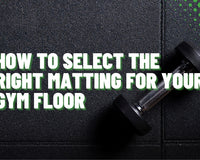When setting up a home gym, the choice of equipment can be daunting.
Multi gyms and power racks are two leading contenders for strength training, each with its unique benefits and considerations.
So we thought we would put them in a head to head to help you determine the best fit for your fitness journey and space.
Multi Gyms vs. Power Racks: What Are They?
When considering strength training at home, two prominent pieces of equipment emerge: the home multi gym and the power rack.
A home multi gym is a versatile piece that incorporates multiple weightlifting stations in a single structure.
Designed for an all-in-one workout experience, multi gyms provide the convenience of various exercises, like leg curls, chest presses, and pull-downs, without the need to change machines.
They often feature weight stacks and pulley systems, allowing for a smooth transition between exercises. The top picks for these machines can be seen in our best multi gym guide UK.
On the other hand, a power rack, sometimes referred to as a squat cage, is a large, cage-like structure primarily designed for free weight exercises like squats, shoulder press and bench presses.
With its adjustable safety bars and barbell catchers, it provides users the confidence to lift heavy weights without a spotter.
While it demands more space, its open design offers a raw and unrestricted lifting experience.
Related: How Much Does a Standard Barbell Weigh?
Price Comparison: Multi Gyms vs. Power Racks
 When investing in home gym equipment, understanding the cost dynamics is vital.
When investing in home gym equipment, understanding the cost dynamics is vital.
For multi gyms, as with many products, the saying "you get what you pay for" rings true.
While tempting, the cheapest multi gym options often compromise on quality, potentially affecting durability and workout efficiency.
For a robust, long-lasting multi gym with satisfactory performance, we recommend investing around £1000.
In contrast, a decent quality power rack can be acquired for half that price, around £500.
This may seem like a significant saving initially, but one must factor in the additional necessary equipment for a comprehensive workout.
The rack itself primarily provides the structure. Essentials like a barbell, weight plates, and potentially a bench, aren’t usually included and will likely increase the overall cost.
However, even with these additions, a power rack setup might still be more cost-effective than a multi gym, especially for those focusing primarily on strength training.
Space Requirements
Space efficiency is often a concern for many home gym owners.
In this aspect, the design of the multi gym is particularly good as they are specifically crafted to maximise functionality while minimising its spatial footprint.
Related: Home Multi Gym Benefits
On the other hand, the spatial demands of a power rack are more pronounced.
While the dimensions of the rack itself might be comparable to a multi gym, you need to take into account the barbell.
If you use a standard 7ft barbell, you also need to consider the space needed to load weight onto the bar.
This often means that the area occupied by a power rack is likely more than that of a multi gym.
So, in terms of space efficiency we believe the multi gym is the winner.
Versatlity
 When evaluating the adaptability of gym equipment, the multi gym and power rack both bring a range of exercises to the table but differ in their scope and specialisation.
When evaluating the adaptability of gym equipment, the multi gym and power rack both bring a range of exercises to the table but differ in their scope and specialisation.
Multi gyms, as previously highlighted, serve as an all-in-one hub for various exercises.
Most come equipped with a chest press/fly machine, allowing users to target both major and minor pectoral muscles.
The inclusion of a high pulley broadens the exercise spectrum to accommodate lat pulldowns and diverse cable workouts.
Additionally, the low pulley system, often combined with a leg developer, allows users to effectively target back muscles through rows and legs through extensions and curls.
As we mentioned earlier, a power rack shines in its ability to support free weight compound movements like squats, shoulder presses, and, with an additional bench, bench presses.
Free weight movements are often deemed superior in engaging a broader range of muscles as users must stabilise the weight and therefore working secondary and stabilising muscles.
Whereas multi gyms offer a more isolated approach, channeling focus to specific muscle groups and ensuring targeted strength development without as much ancillary engagement.
So, in terms of versatility, we believe power racks have more to offer as they can be used to target more muscle groups than a multi gym.
But if you are just getting started out and are unsure of how to perform compound exercises with good form, then the multi gym might be the best option.
Final Verdict
For fitness novices unsure about safely executing compound movements, multi gyms are an ideal starting point, offering guidance and structure.
However, for a long-term investment that adapts to a user's evolving fitness journey, the power rack reigns supreme.
Its versatility ensures you'll likely never outgrow its capabilities, making it a timeless cornerstone in any home gym.
Read Next: The Different Types of Multi Gyms





